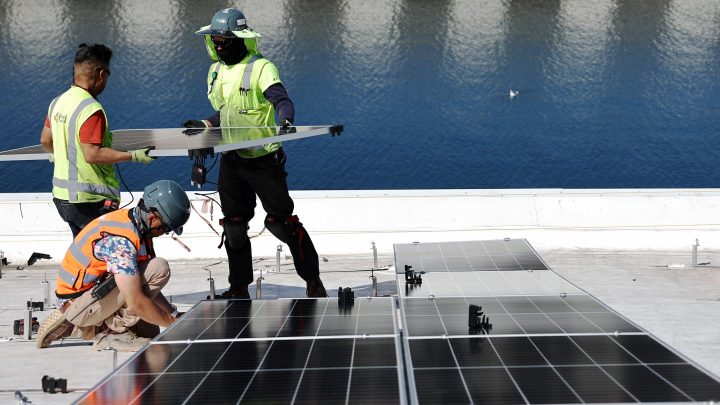
The clean energy transition is underway. But where will the workers come from?
The clean energy transition is underway. But where will the workers come from?

Billions of federal dollars have been dedicated to transitioning the United States to a renewable energy economy through President Joe Biden’s Inflation Reduction Act. The law is a year old now. It’s one thing to provide funding, it’s a whole other thing to find and train workers to install solar panels and maintain electric vehicle charging stations.
The clean energy sector is growing, according to the U.S. Department of Energy. Between 2021 and 2022 those jobs grew faster than U.S. employment overall.
So we’re obviously making strides and we’re seeing some movement.
But Cynthia Finley with the Interstate Renewable Energy Council says we will need to increase that number.
In fact, we’ll need to double that number in the next decade to meet the demand for a green energy economy, according to a recent report from the consulting firm Oliver Wyman.
Carol Zabin, with the UC Berkeley Labor Center, doesn’t see too much of a problem recruiting construction workers right now because the IRA funding prioritizes trades with apprenticeships.
“There’s language written into the bill that says if you pay prevailing wage, if you use apprentices, then you get larger subsidies and incentives from the government,” she said.
There are often waitlists for apprenticeship programs, and once a trade worker is trained they can easily adapt to new technologies in their field, Zabin said. Where you see worker scarcity is in lower wage industries without apprenticeships, like manufacturing, which often doesn’t pay high wages. So, that industry won’t see as many subsidies that can help attract workers.
“Just because there’s a lot of money flowing, doesn’t mean that the rising tide that’s going to lift all boats,” said Joseph Kane, a fellow with the Brookings Institution.
He said this big transition is going to need workers at all skill levels and stages of their career — not just fresh graduates.
“Mid-career workers who may be unemployed or underemployed or looking to transition to new careers, they need to be part of this,” Kane said.
Women and people of color have a lot to offer here, he said. And more broadly, the clean energy industry is changing and growing and companies are trying to establish their place in it, secure funding, and trying to hire all at the same time.
“We’re kind of building the plane as it’s taking off,” said Kane. “We don’t know entirely what the ultimate target is here, because it’s a moving target.”
That’s because climate change — and our means of adapting to it — are rolling out in real time. So, Kane said, we may be playing catchup for a while.
There’s a lot happening in the world. Through it all, Marketplace is here for you.
You rely on Marketplace to break down the world’s events and tell you how it affects you in a fact-based, approachable way. We rely on your financial support to keep making that possible.
Your donation today powers the independent journalism that you rely on. For just $5/month, you can help sustain Marketplace so we can keep reporting on the things that matter to you.

















